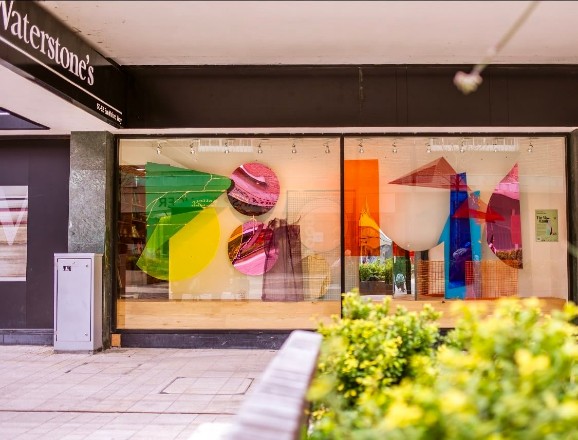Can Perspex (acrylic) be recycled?
Published on: 13/12/2022
Poly (methyl methacrylate) “PMMA” is the scientific name for the synthetic polymer commonly known as Persex, Acrylic and Plexiglass. Perspex (acrylic) is available in a number of different forms including flat sheet (both cast and extruded versions) in 150+ colours, rod, tube and block. It’s uses are far and wide covering retail, manufacturing, glazing and roofing to name but a few.

Acrylic is highly durable, rigid, has excellent clarity and is highly resistant to UV. These properties, as well as its ability to be moulded, or shaped with machinery such as lasers, saws and routers have seen it’s usage increase significantly over the last decade and is often seen as a less breakable, more flexible alternative to glass. Perspex (acrylic) is a thermoplastic, meaning that is can be heated and cooled while retaining its properties. With the increase in usage it is important that industry works hard to ensure the material can be recycled and has minimal impact on the environment.
Acrylic is classified as a Group 7 plastic, which includes recyclable, non-recyclable, and biodegradable plastics. Group 7 plastics are not always recycled because the process is expensive and requires specialist machinery, however they can be recycled and we, like many other plastic suppliers, are working hard to do our part and push industry to expand recycling capabilities.
How is Perspex (acrylic) manufactured?
Acrylic is manufactured through a process called polymerization. The methyl methacrylate is placed into a mould (traditionally between two flat sheets of glass when manufacturing acrylic sheet) along with a catalyst, like organic peroxide, that is added to speed up the process.
How is Perspex (acrylic) recycled?
To recycle acrylic, it has to go through the process of depolymerization. Depolymerization describes the process or act of breaking down a polymer into its monomeric components, which is the opposite of polymerization which is the process previously described used to manufacture acrylic. The acrylic is heated and taken through the process of pyrolysis which describes the process by which a solid undergoes thermal degradation into smaller small volatile molecules. At this stage molten lead is added to the acrylic which separates the methyl methacrylate from the catalyst and results in a molten MMA of approximately 98% purity. Once this has been achieved, the acrylic resin can be cast or extruded back into flat sheet or shapes, resulting in a far more circular economy.
Is Perpsex (acrylic) biodegradable?
Biodegradable products and materials are classified as such if bacteria, microorganisms, and other living organisms can break them down. The materials used to manufacture acrylic are artificial and will not breakdown, and therefore is not considered a biodegradable material.
What measures do Simply Plastics take to support recycling?
We are starting to see more interest in recycled products from consumers and businesses alike which is driving demand and forcing manufacturers to be more proactive in providing recycled materials. We undertake a number of measures to ensure that we recycle as much of the scrap/offcut that we generate post-manufacture, and the general waste that we generate as a business.
- We work with the most responsible manufacturers and ensure that over 80% of all of the products that we supply are 100% recyclable;
- We use optimisation software to ensure that every order is cut efficiently to minimise wastage, reducing the need for recycling;
- Many of the products we offer are backed by a 10-year warrantee reducing the need for replacements and wastage;
- All of our scrap acrylic and polycarbonate are collected and processed by a specialist recycler;
- We will send any Perspex or Polycarbonate for recycling that our customers return to us (please contact us for more details);
- We use packaging materials that have a significant amount of recycled content;
- Our general waste is collected by a specialist recycler;
What recycled materials does Simply Plastics supply?
- Perspex Re Cast Acrylic (available in Clear, Black & White) – 100% recycled content
- Polycarbonate – at least 30% recycled content
- Extruded acrylic – at least 25% recycled content
- Aluminium Composite – at least 70% recycled content
- PVC Foam – at least 50% recycled content

 {{product.colours}} Colours
{{product.colours}} Colours